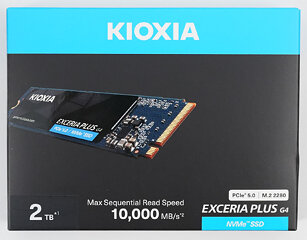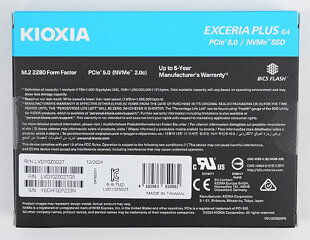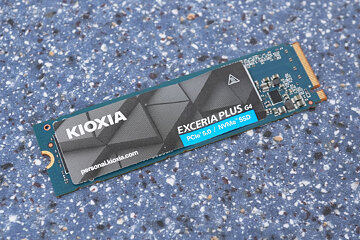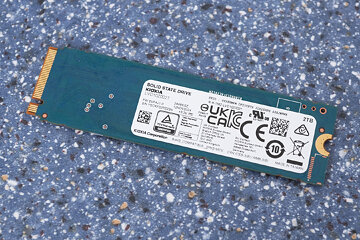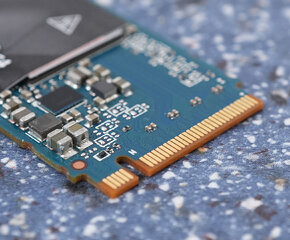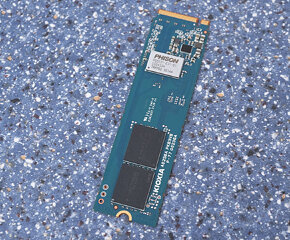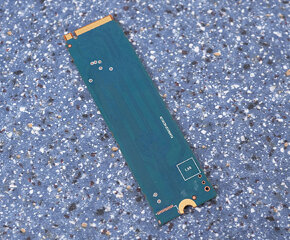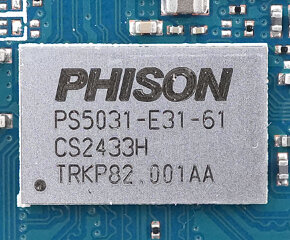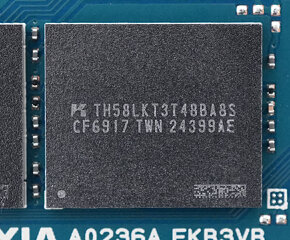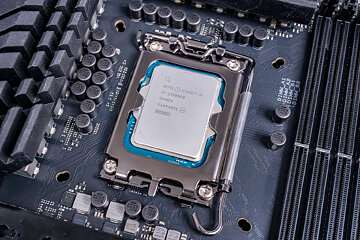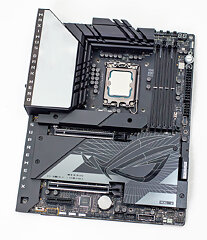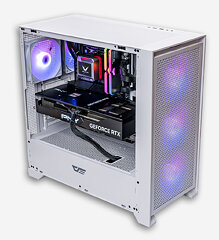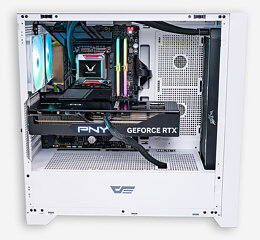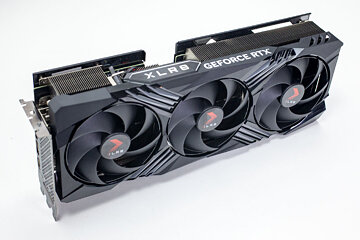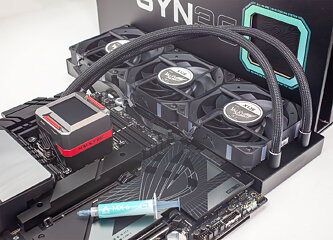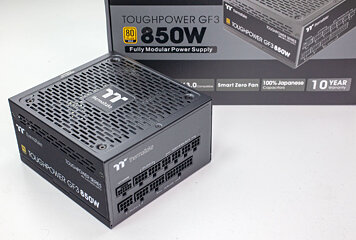 41
41
Kioxia Exceria Plus G4 2 TB Review - Energy-Efficient PCIe Gen 5
(41 Comments) »Introduction

The Kioxia brand was established around 2018/2019, after Toshiba sold its SSD and memory branch "Toshiba Memory." The company now produces flash memory for its own products, but also WD and SanDisk. Part of the original Toshiba SSD business was formed in 2014, when Toshiba bought the famous OCZ brand. Kioxia later acquired the SSD maker Lite-On. Unfortunately, first party Kioxia SSD products are not available in the United States.

In today's review we are taking a look at the Kioxia Exceria Plus G4, which, as the name suggests is the fourth generation of the company's "Exceria Plus" solid-state-drive. What's new with the G4 is that it is Kioxia's first consumer SSD that introduces support for the PCI-Express Gen 5 interface. We reviewed the Exceria Plus G3 last year, the new G4 uses a Phison E31T controller instead of the E21 on the G3, and the NAND flash is Kioxia's 218-layer 3D TLC (vs 112-layer 3D TLC on the G3). This E31T+218L TLC combination is used on other drives, too, like the Corsair MP700 Elite, PNY CS2150 and MSI Spatium M560.
The Kioxia Exceria Plus G4 is available in capacities of 1 TB and 2 TB. While Kioxia doesn't sell these drives in the States, pricing in Europe is €112 for the 1 TB model and €190 for the 2 TB variant, including 20% VAT, which we converted to $100 and $170 respectively. Endurance for these models is set to 600 TBW and 1200 TBW, respectively. Kioxia offers a five-year warranty with the Exceria Plus G4.
| Specifications: Kioxia Exceria Plus G4 2 TB SSD | |
|---|---|
| Brand: | Kioxia |
| Model: | LVD10Z002TG8 |
| Capacity: | 2000 GB (1863 GB usable) 48 GB additional overprovisioning |
| Controller: | Phison E31T |
| Flash: | Kioxia 218-Layer 3D TLC BiCS8 TH58LKT3T48BA8S |
| DRAM: | N/A, but 64 MB HMB |
| Endurance: | 1200 TBW |
| Form Factor: | M.2 2280 |
| Interface: | PCIe Gen 5 x4, NVMe 2.0 |
| Device ID: | KIOXIA-EXCERIA PLUS G4 SSD |
| Firmware: | EVFAJ1.0 |
| Warranty: | Five years |
| Price at Time of Review: | $180 / $85 per TB |
Packaging
The Drive
The drive is designed for the M.2 2280 form factor, which makes it 22 mm wide and 80 mm long.
PCI-Express 5.0 x4 is used as the host interface to the rest of the system, which doubles the theoretical bandwidth compared to PCIe 4.0 x4.
On the PCB you'll find the controller and two flash chips, a DRAM cache chip is not included.
Chip Component Analysis
The Phison E31 is the company's second PCI-Express 5.0 controller. It supports a four-lane configuration and four flash channels, it's a cost-optimized DRAM-less design. The controller is produced using a 7 nm process at TSMC Taiwan.
The two flash chips are Kioxia 218-layer 3D TLC NAND. Each chip has a capacity of 1 TB.
Test Setup
| Test System SSD 2024 | |
|---|---|
| Processor: | Intel Core i9-13900KS Raptor Lake 6.0 GHz, 8+16 cores / 32 threads |
| Motherboard: | ASUS ROG Z790 Dark Hero BIOS 1102 |
| Memory: | 2x 16 GB DDR5-6000 |
| Graphics: | PNY GeForce RTX 4080 Super Verto OC |
| Cooling: | Valkyrie Syn 360 mm AIO |
| Thermal Paste: | Arctic MX-6 |
| Power Supply: | Thermaltake Toughpower GF3 850 W ATX 3.0 / 16-pin 12VHPWR |
| Case: | darkFlash DRX70 White |
| Operating System: | Windows 11 Professional 64-bit 23H2 VBS enabled (Windows 11 default) |
| Drivers: | NVIDIA: 552.12 WHQL |
Synthetic Testing
- Tests are run with a 20-second-long warm-up time (result recording starts at second 21).
- Between each test, the drive is left idle for 60 seconds, to allow it to flush and reorganize its internal data.
- All write requests contain random, incompressible data.
- Disk cache is flushed between all tests.
- During these tests, M.2 drives are tested with additional active fan-cooling, to ensure thermal throttling can't happen
Real-life Testing
- After initial configuration and installation, a disk image is created; it is used to test every drive.
- Automated updates are disabled for the OS and all programs. This ensures that—for every review—each drive uses the same settings, without interference from previous testing.
- Our disk image consumes around 700 GB—partitions are resized to fill all available space on the drive.
- All drives are filled with random data to 85% of their capacity. This is intentional, to run the drive in realistic operating conditions—nobody uses a nearly-empty SSD in their system. It also puts additional stress on the pseudo-SLC cache subsystem, because there is less free NAND space to work with.
- Partitions are aligned properly.
- Disk cache is flushed between all tests.
- In order to minimize random variation, each real-life performance test is run several times, with reboots between tests to minimize the impact of disk cache.
- All application benchmarks run the actual application and do not replay any disk traces.
- Our real-life testing data includes performance numbers for a typical high-performance HDD, using results from a Western Digital WD Black 1 TB 7200 RPM 3.5" SATA. HDDs are significantly slower than SSDs, which is why we're not putting the result in the chart, as that would break the scaling, making the SSDs indistinguishable in comparison. Instead, we've added the HDD performance numbers in the title of each test entry.
- During these tests, M.2 drives are tested with additional active fan-cooling, to ensure thermal throttling can't happen
Our Patreon Silver Supporters can read articles in single-page format.
Jul 24th, 2025 15:00 CDT
change timezone
Latest GPU Drivers
New Forum Posts
- RX 9000 series GPU Owners Club (1192)
- Need some help finding correct VBIOS for my RX580 (8)
- AI Job Losses: let's count the losses up, total losses to AI so far 94,000 and counting (58)
- What are these keycaps? (0)
- What's your latest tech purchase? (24356)
- 14900k high voltage (42)
- GTX 1660ti GALAX OC UEFI BIOS (0)
- Your PC ATM (35541)
- 3D Printer Club (555)
- The Official Linux/Unix Desktop Screenshots Megathread (789)
Popular Reviews
- Noctua NF-A12x25 G2 PWM Fan Review
- MSI MPG B850I Edge Ti Wi-Fi Review
- Cougar OmnyX Review
- Thermal Grizzly WireView Pro Review
- UPERFECT UMax 24 Review
- TerraMaster F4-424 Max Review - The fastest NAS we've tested so far
- Sharkoon OfficePal C10 Review - Affordable and Decent
- Razer Blade 16 (2025) Review - Thin, Light, Punchy, and Efficient
- Upcoming Hardware Launches 2025 (Updated May 2025)
- Sapphire Radeon RX 9060 XT Pulse OC 16 GB Review - An Excellent Choice
TPU on YouTube
Controversial News Posts
- Some Intel Nova Lake CPUs Rumored to Challenge AMD's 3D V-Cache in Desktop Gaming (140)
- AMD Radeon RX 9070 XT Gains 9% Performance at 1440p with Latest Driver, Beats RTX 5070 Ti (131)
- AMD's Upcoming UDNA / RDNA 5 GPU Could Feature 96 CUs and 384-bit Memory Bus (115)
- NVIDIA GeForce RTX 5080 SUPER Could Feature 24 GB Memory, Increased Power Limits (115)
- NVIDIA DLSS Transformer Cuts VRAM Usage by 20% (99)
- AMD Sampling Next-Gen Ryzen Desktop "Medusa Ridge," Sees Incremental IPC Upgrade, New cIOD (97)
- NVIDIA Becomes First Company Ever to Hit $4 Trillion Market-Cap (94)
- Windows 12 Delayed as Microsoft Prepares Windows 11 25H2 Update (92)
